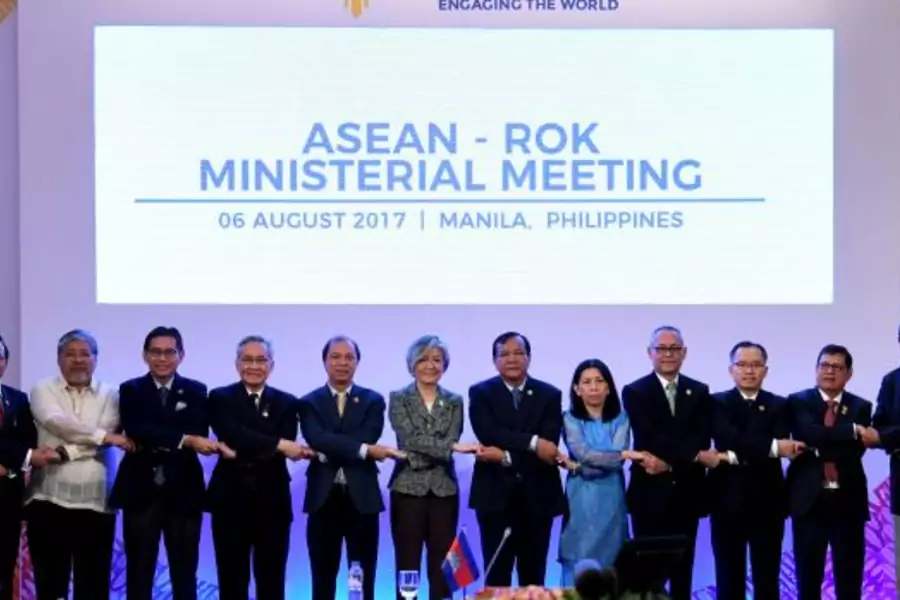Increasing U.S.-ROK-ASEAN Cooperation

This post is co-authored by Sungtae "Jacky" Park, research associate for Korea Studies at the Council on Foreign Relations.
Since its establishment in 1967, the Association of Southeast Asian Nations (ASEAN) has fostered unprecedented levels of regional economic, political, and security cooperation. Yet despite these accomplishments, effective regionalism in Southeast Asia faces constraints. The process of regional integration is limited by the emphasis on economic cooperation rather than on forming effective mechanisms to resolve crisis spots such as the South China Sea. In a new CFR discussion paper, Developing U.S.-ROK-ASEAN Cooperation, Binh Thai Lai, deputy consul-general of Vietnam in Houston, argues that the United States should take advantage of South Korea’s increasing diplomatic and economic capacity and seek to improve the state of U.S.-South Korea-ASEAN relations to promote regional security and stability in Southeast Asia.
More on:
South Korea stands out as an ideal non-ASEAN Asian power that has the potential to work with both the United States and ASEAN to foster greater regional cooperation in Southeast Asia. Japan, while a major U.S. ally and economy, has geopolitical, historical, and territorial disputes with China and would have difficulty adding to regional cooperation.
The author recommends that the three countries should:
- Enhance discussion on regional security and development issues in bilateral and trilateral mechanisms. The United States, South Korea, and ASEAN countries should host discussions in their respective countries on topics such as responses to nontraditional security issues.
- Seek resolutions to security and development issues at regional forums. Forums focused on ASEAN should not shy away from discussing sensitive issues such as the South China Sea.
- Promote maritime security cooperation. In addition to calling for enhanced maritime security in general, the United States, South Korea, and ASEAN need to strengthen joint patrol activities, promote cooperation in avoiding clashes, and cooperate in responding to disasters at sea.
More on:
- Increase contributions to the Lower Mekong Initiative. Based on the existing framework of the initiative, the United States should call for South Korea to contribute more (together with Japan and Australia) to the LMI to address the increasing challenges facing ASEAN countries along the Mekong.
- Strengthen infrastructure and information connectivity in Southeast Asia. Providing affordable rural internet connectivity and enhancing land, maritime, and energy infrastructure will strengthen ASEAN connectivity and reduce the disparity in the levels of development among ASEAN countries.
- Enhance cultural connectivity. The three parties should organize more cultural activities.
The Asia-Pacific region lacks an effective mechanism to promote international cooperation, particularly in resolving controversial issues. The United States, ASEAN, and South Korea can help to remedy this situation by strengthening their bilateral and trilateral coordination on economic and security policies. The three parties can demonstrate a new model for group collaboration among countries that share common goals despite being at different levels of development.
This post is a summary of the discussion paper, Developing U.S.-ROK-ASEAN Cooperation.
 Online Store
Online Store